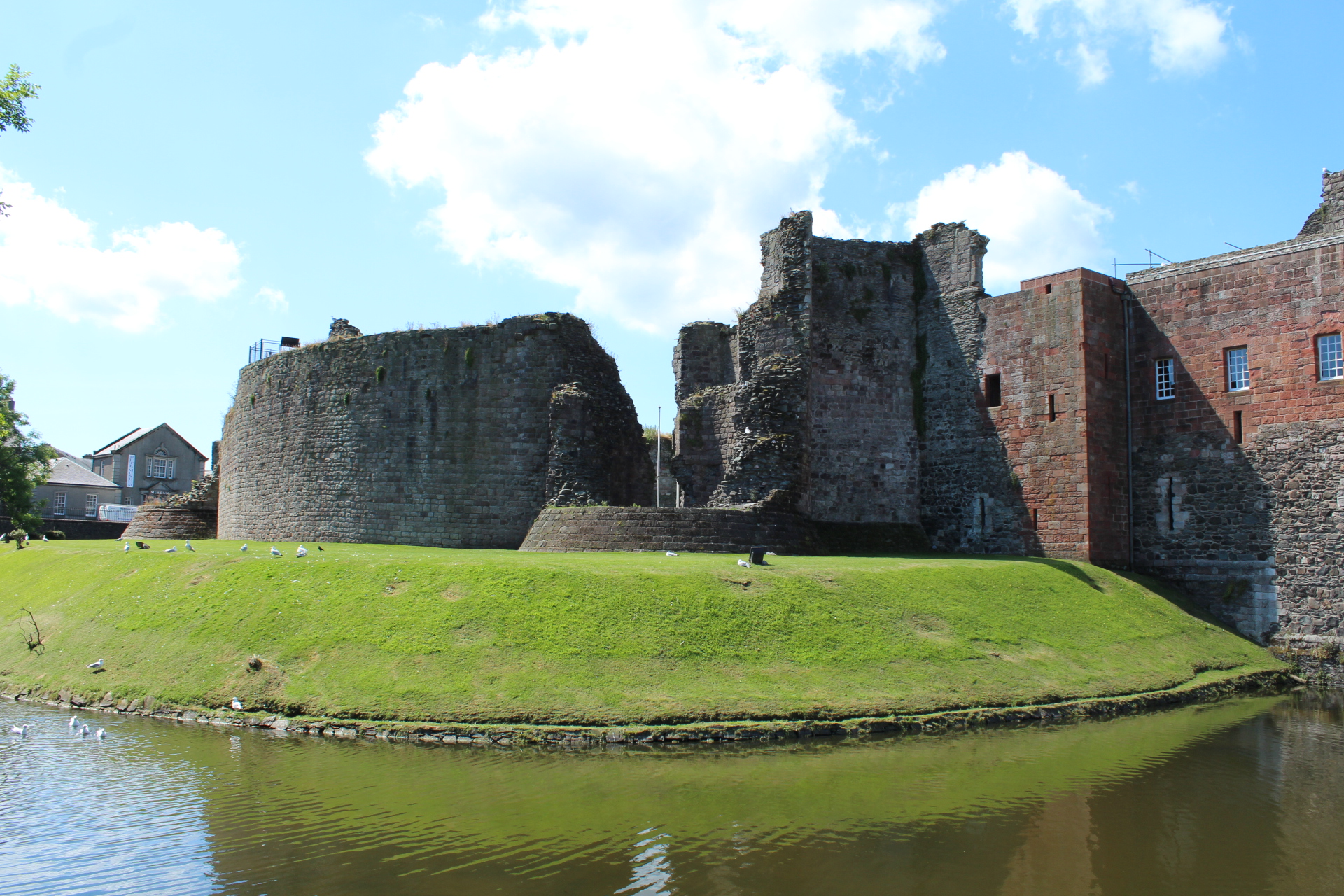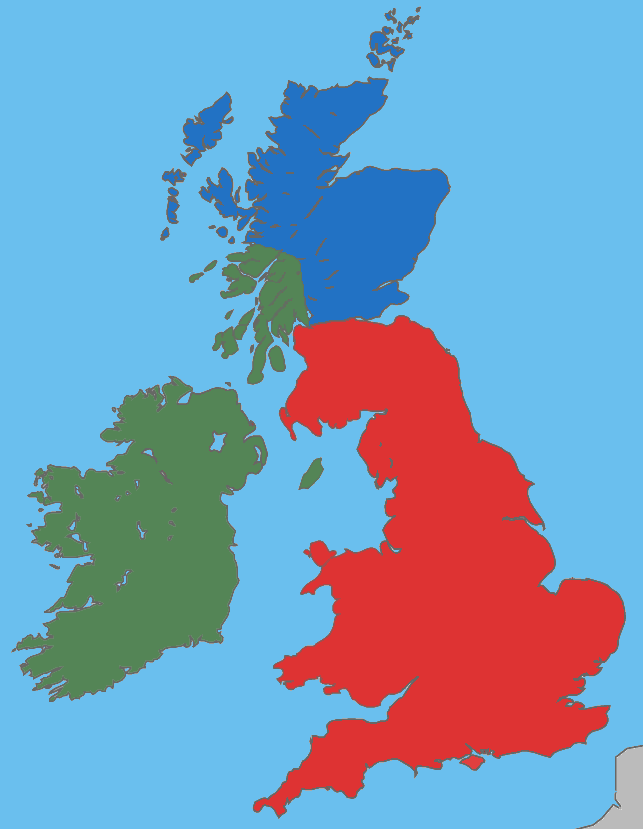|
Г“spakr-HГЎkon (map)
Г“spakr (died 1230), also known as HГЎkon, was a King of the Isles. He seems to have been a son of Dubgall mac Somairle, King of the Isles, and therefore a member of the Meic Dubgaill branch of the Meic Somairle kindred. Г“spakr spent a considerable portion of his career in the Kingdom of Norway as a member of the Birkibeinar faction in the Civil war era in Norway. He seems to be identical to Г“spakr suГ°reyski, a Birkibeinar who took part in the plundering of Hebrides and the sacking of Iona in 1209/1210. The context of this expedition is uncertain, although it may have been envisioned as a way of reasserting Norwegian royal authority into the Kingdom of the Isles. In the decade following the ravaging of Iona, the Kingdom of the Isles was plagued by vicious conflict between two competing dynasts of the Crovan dynasty. Although one member of this kindred, Г“lГЎfr GuГ°rГёГ°arson, King of the Isles, overcame his main dynastic rival in 1229, he faced continued opposition from Alan ... [...More Info...] [...Related Items...] OR: [Wikipedia] [Google] [Baidu] |
King Of The Isles
The Kingdom of the Isles, also known as Sodor, was a Norse–Gaelic kingdom comprising the Isle of Man, the Hebrides and the islands of the Clyde from the 9th to the 13th centuries. The islands were known in Old Norse as the , or "Southern Isles" as distinct from the or Northern Isles of Orkney and Shetland. In Scottish Gaelic, the kingdom is known as . The territory is sometimes called the Kingdom of Mann and the Isles, although only some of the later rulers claimed that title. The historical record is incomplete, and the kingdom was not a continuous entity throughout the entire period. At times the rulers were independent of external control, although for much of the period they had overlords in Norway, Ireland, England, Scotland or Orkney. At times there also appear to have been competing claims for all or parts of the territory. The islands have a total land area of over and extend for more than from north to south. Viking influence in the area began in the late 8th cen ... [...More Info...] [...Related Items...] OR: [Wikipedia] [Google] [Baidu] |
Isle Of Bute
The Isle of Bute (; or '), known as Bute (), is an island in the Firth of Clyde in Scotland, United Kingdom. It is divided into highland and lowland areas by the Highland Boundary Fault. Formerly a constituent island of the larger County of Bute, it is now part of the council area of Argyll and Bute. Bute's resident population was 6,498 in 2011, a decline of just over 10% from the figure of 7,228 recorded in 2001 against a background of Scottish island populations as a whole growing by 4% to 103,702 for the same period. Name The name "Bute" is of uncertain origin. Watson and Mac an Tà illeir support a derivation from Old Irish ' ("fire"), perhaps in reference to signal fires.Watson (1926) pp 95–6Mac an Tà illeir (2003) p. 24 This reference to beacon fires may date from the Viking period, when the island was probably known to the Norse as '. Other possible derivations include Brittonic ''budh'' ("corn"), "victory", , or ', his monastic cell. There is no likely derivatio ... [...More Info...] [...Related Items...] OR: [Wikipedia] [Google] [Baidu] |
Annals Of Ulster
The ''Annals of Ulster'' () are annals of History of Ireland, medieval Ireland. The entries span the years from 431 AD to 1540 AD. The entries up to 1489 AD were compiled in the late 15th century by the scribe RuaidhrГ Г“ LuinГn, under his patron Cathal Г“g Mac Maghnusa, on the island of ''Senadh-Mic-Maghnusa'', also known as ''Senad'' or Ballymacmanus Island (now known as Belle Isle, where Belle Isle Castle is located), near Lisbellaw, on Lough Erne in the kingdom of ''Fir Manach'' (Fermanagh). Later entries (up to AD 1540) were added by others. Entries up to the mid-6th century are retrospective, drawing on earlier annalistic and historical texts, while later entries were contemporary, based on recollection and oral history. Thomas Charles-Edwards, T. M. Charles-Edwards has claimed that the main source for its records of the first millennium A.D. is a now-lost Armagh continuation of the ''Chronicle of Ireland''. The Annals used the Irish language, with some ... [...More Info...] [...Related Items...] OR: [Wikipedia] [Google] [Baidu] |
Foster Father
Foster care is a system in which a minor has been placed into a ward, group home (residential child care community or treatment centre), or private home of a state-certified caregiver, referred to as a "foster parent", or with a family member approved by the state. The placement of a "foster child" is normally arranged through the government or a social service agency. The institution, group home, or foster parent is compensated for expenses unless with a family member. Any adult who has spent time in care can be described as a "care leaver", especially in European countries. The state, via the family court and child protective services agency, stand ''in loco parentis'' to the minor, making all legal decisions while the foster parent is responsible for the day-to-day care of the minor. Scholars and activists have expressed concerns about the efficacy of foster care services provided by non-government organisations. Specifically, this pertains to poor retention rates of socia ... [...More Info...] [...Related Items...] OR: [Wikipedia] [Google] [Baidu] |
HГЎkonar Saga HГЎkonarsonar
''Hákonar saga Hákonarsonar'' ("The Saga of Haakon Haakonarson") or ''Hákonar saga gamla'' ("The Saga of Old Haakon") is an Old Norse Kings' Saga, telling the story of the life and reign of King Haakon Haakonarson of Norway. Content and style The circumstances of the saga's composition are exceptionally well understood, as they are recorded in some detail in ''Sturlunga saga'' (particularly ''Sturlu þáttr''): the saga was written in the 1260s (apparently 1264–65) by the Icelandic historian and chieftain Sturla Þórðarson (nephew of the noted historian Snorri Sturluson). Sturla Þórðarson was at the court of Haakon's son Magnus Lagabøte when Magnus learned of his father's death in Kirkwall in Orkney. Magnus is said to have immediately commissioned Sturla to write his father's saga. This was awkward for Sturla: 'King Hákon had instigated the death of Sturla's uncle, Snorri Sturluson, in 1241. Sturla rightly regarded Hákon as his most dangerous enemy, for he had ste ... [...More Info...] [...Related Items...] OR: [Wikipedia] [Google] [Baidu] |
Patronym
A patronymic, or patronym, is a component of a personal name based on the given name of one's father, grandfather (more specifically an avonymic), or an earlier male ancestor. It is the male equivalent of a matronymic. Patronymics are used, by custom or official policy, in many countries worldwide, although elsewhere their use has been replaced by or transformed into patronymic surnames. Examples of such transformations include common English surnames such as Johnson (son of John). Origins of terms The usual noun and adjective in English is ''patronymic'', but as a noun this exists in free variation alongside ''patronym''. The first part of the word ''patronym'' comes from Greek ПЂО±П„О®ПЃ ''patД“r'' 'father' ( GEN ПЂО±П„ПЃПЊП‚ ''patros'' whence the combining form ПЂО±П„ПЃОї- ''patro''-); the second part comes from Greek бЅ„ОЅП…ОјО± ''onyma'', a variant form of бЅ„ОЅОїОјО± ''onoma'' 'name'. In the form ''patronymic'', this stands with the addition of the suffix -О№ОєПЊП‚ ... [...More Info...] [...Related Items...] OR: [Wikipedia] [Google] [Baidu] |
Gaelic Languages
The Goidelic ( ) or Gaelic languages (; ; ) form one of the two groups of Insular Celtic languages, the other being the Brittonic languages. Goidelic languages historically formed a dialect continuum stretching from Ireland through the Isle of Man to Scotland. There are three modern Goidelic languages: Irish language, Irish ('), Scottish Gaelic ('), and Manx language, Manx ('). Manx died out as a first language in the 20th century but has since been revived to some degree. Nomenclature ''Gaelic'', by itself, is sometimes used to refer to Scottish Gaelic, especially in Scotland, and therefore is ambiguous. Irish language, Irish and Manx language, Manx are sometimes referred to as Irish Gaelic and Manx Gaelic (as they are Goidelic or Gaelic languages), but the use of the word ''Gaelic'' is unnecessary because the terms Irish and Manx, when used to denote languages, always refer to those languages. This is in contrast to Scottish Gaelic, for which "Gaelic" distinguishes the langu ... [...More Info...] [...Related Items...] OR: [Wikipedia] [Google] [Baidu] |
Somairle Mac Gilla Brigte, King Of The Isles
Somerled (died 1164), known in Middle Irish as Somairle, Somhairle, and Somhairlidh, and in Old Norse as Sumarliði , was a mid-12th-century Norse-Gaelic lord who, through marital alliance and military conquest, rose in prominence to create the Kingdom of Argyll and the Isles. Little is certain of Somerled's origins, although he may have been born in the north of Ireland and appears to have belonged to a Norse–Gaelic family of some prominence. His father, GilleBride, of royal Irish ancestry, appears to have conducted a marriage alliance with Máel Coluim mac Alaxandair, son of Alexander I of Scotland, and claimant to the Scottish throne. During a period of alliance with David I of Scotland, Somerled married Ragnhild, daughter of Óláfr Guðrøðarson, King of Man and the Isles in 1140. In 1153, Olaf of Man died and was succeeded by his son, Godred. But Godred Olafsson was a very unpopular ruler. Somerled was asked by Thorfinn Ottarson, a Manx chief, to allow Somerled's son ... [...More Info...] [...Related Items...] OR: [Wikipedia] [Google] [Baidu] |
Г“spakr-HГЎkon (map)
Г“spakr (died 1230), also known as HГЎkon, was a King of the Isles. He seems to have been a son of Dubgall mac Somairle, King of the Isles, and therefore a member of the Meic Dubgaill branch of the Meic Somairle kindred. Г“spakr spent a considerable portion of his career in the Kingdom of Norway as a member of the Birkibeinar faction in the Civil war era in Norway. He seems to be identical to Г“spakr suГ°reyski, a Birkibeinar who took part in the plundering of Hebrides and the sacking of Iona in 1209/1210. The context of this expedition is uncertain, although it may have been envisioned as a way of reasserting Norwegian royal authority into the Kingdom of the Isles. In the decade following the ravaging of Iona, the Kingdom of the Isles was plagued by vicious conflict between two competing dynasts of the Crovan dynasty. Although one member of this kindred, Г“lГЎfr GuГ°rГёГ°arson, King of the Isles, overcame his main dynastic rival in 1229, he faced continued opposition from Alan ... [...More Info...] [...Related Items...] OR: [Wikipedia] [Google] [Baidu] |






